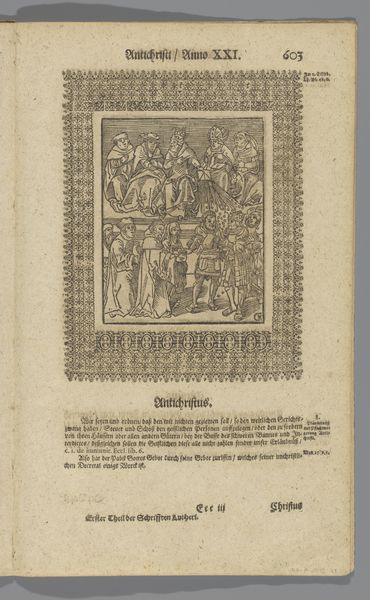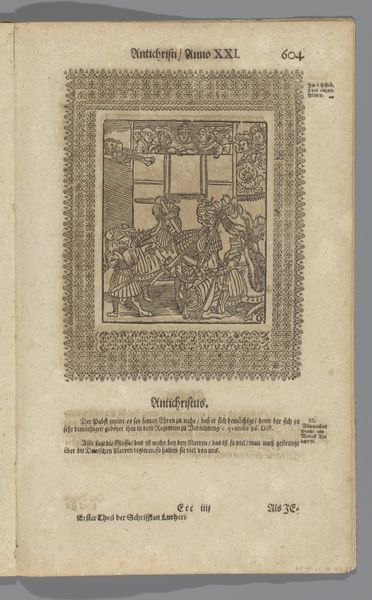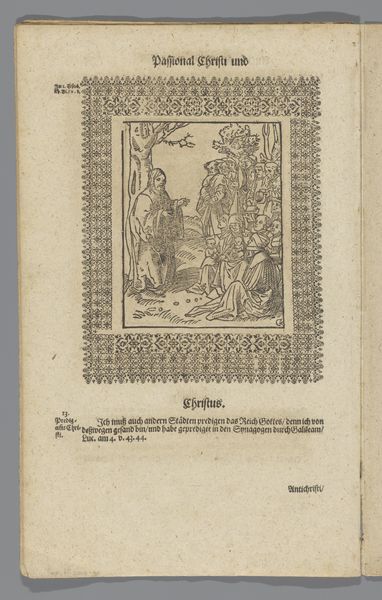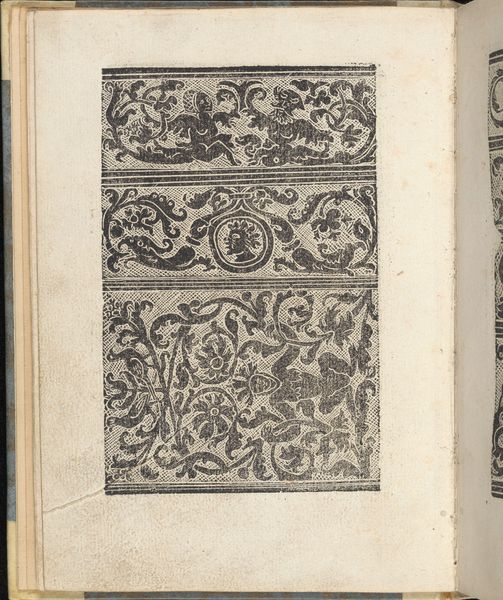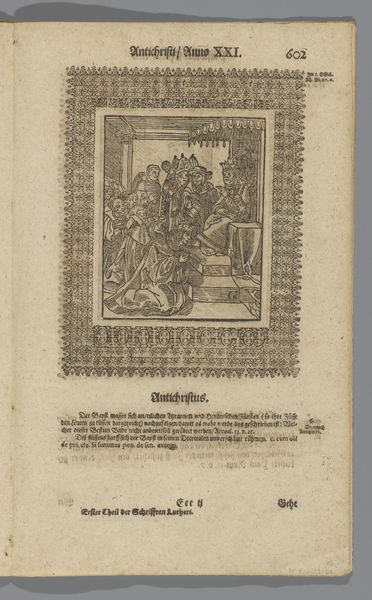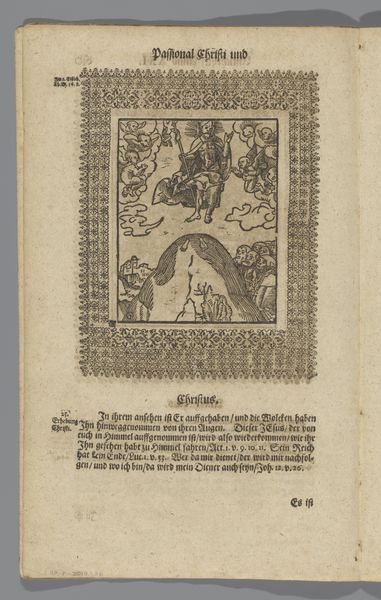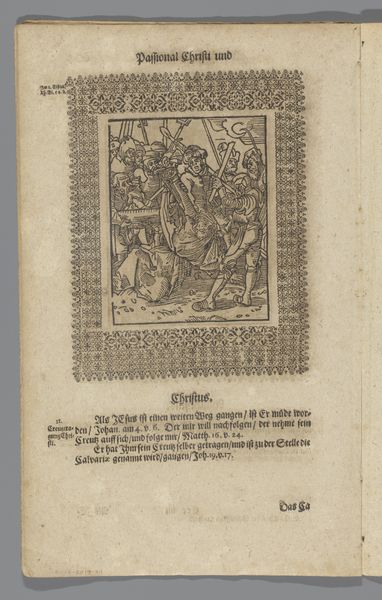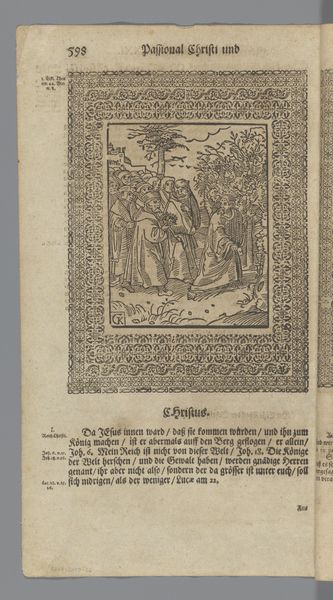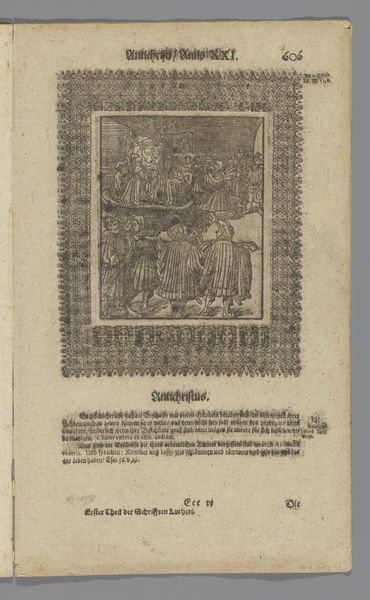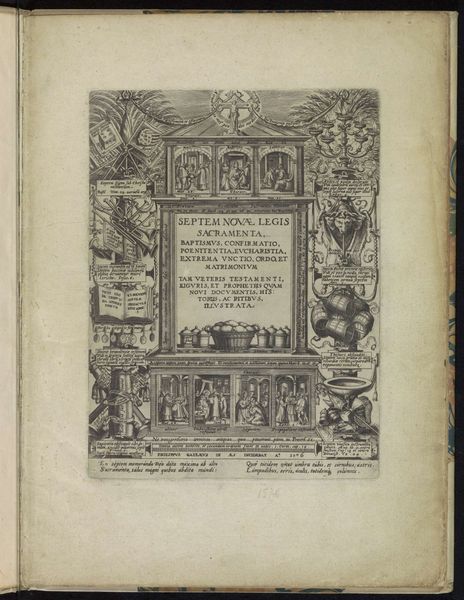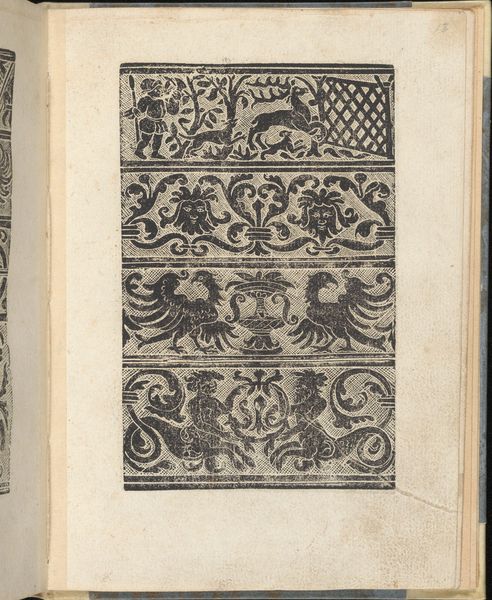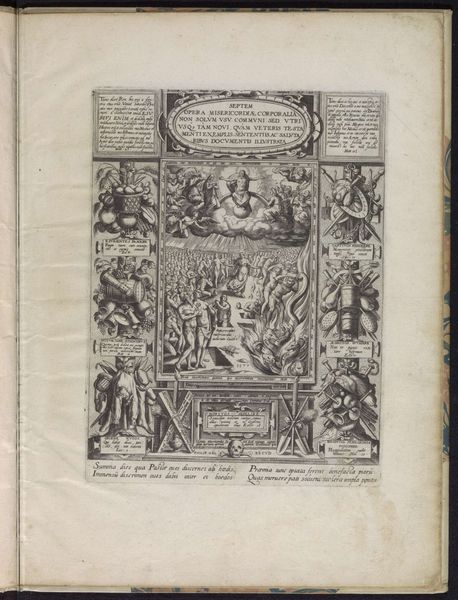
Dimensions: height 322 mm, width 190 mm
Copyright: Rijks Museum: Open Domain
This 17th-century print by the Monogrammist GK, rendered in woodcut, presents a stark visual narrative. The composition is densely packed, dominated by a chaotic scene framed by an ornamental border. Figures tumble into a fiery abyss, creating a sense of violent upheaval. The high-contrast black and white enhances the drama, spotlighting the grotesque details of tormented figures and monstrous entities. The artist uses the stark lines to create texture and depth, emphasizing the emotional intensity. The overall effect is unsettling, a graphic depiction of damnation. Here, the semiotic structure is clear: fire signifies hell, monstrous figures represent evil, and the falling pope symbolizes the corruption of religious authority. The visual language reflects broader anxieties during the Reformation era. It functions as a powerful critique of established institutions. The lack of grayscale intensifies its message, presenting a world divided into stark moral absolutes. This print not only visualizes religious conflict but also engages with early modern debates about power, faith, and representation.
Comments
No comments
Be the first to comment and join the conversation on the ultimate creative platform.
